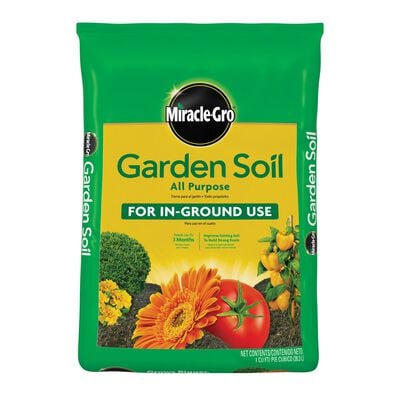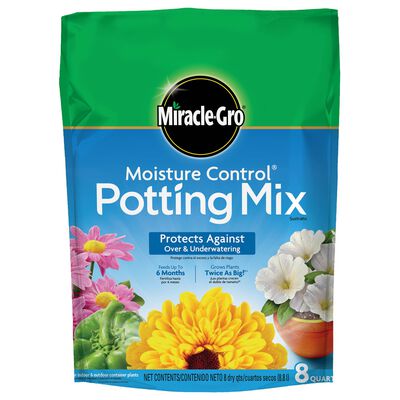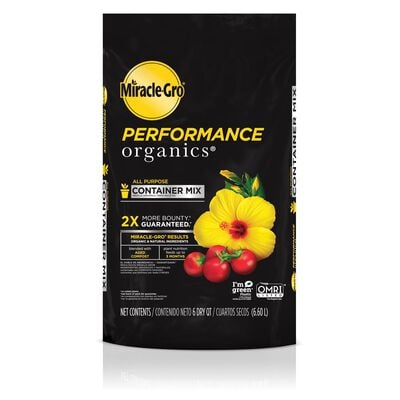
Miracle-Gro LiquaFeed Universal Starter Kit FAQ
All your questions about the new Miracle-Gro® LiquaFeed® Universal answered.
How do I remove the LiquaFeed® Universal Feeder from the package?
Pull the flexible packaging away from the neck of the bottle, and pull the taped bottom end away from the bottom the base. Turn the base upside down, and remove the yellow retaining nut. Turn the base right side up, and push the release lever back to unlatch the Universal Feeder.
What kinds of watering devices can I use?
Almost any watering device can be used with the LiquaFeed® Universal Feeder handheld sprayers, soaker hoses, sprinklers, drip irrigation, watering timers, special/ornamental water sprinklers, and even open garden hoses. Its also a great way to fill watering cans with premeasured plant food for your container plants. If it waters, now it can feed!
If using the Universal Feeder with a drip irrigation system, we recommend using enough emitters to produce a minimum of 12 gallons per hour outflow.
How long does one LiquaFeed Plant Food bottle last when using the LiquaFeed® Universal Feeder?
Each bottle will feed approximately a 400 square foot area, but the time to empty each bottle will vary depending on the watering device and water pressure. The chart below shows approximately how long a bottle will last with various watering devices:

*Input pressure for these was measured at 50 psi. Watering times will vary depending on each individuals water pressure, so these times are meant only for approximation.
How do I know that the Universal Feeder is working and feeding my plants?
When the feeder is turned on the FEED setting, there should be a clicking sound within the feeder (the speed adjusts with the water flow) and bubbles will be forming in the bottle, indicating product is being pulled into the feeder. When using low flow devices (i.e. soaker hoses, misters, or drip irrigation) the bottle will empty very slow (soaker hose will last approximately 50 minutes).
Can I leave the LiquaFeed® Universal Feeder attached to my spigot?
One of the best parts of the Universal Feeder is that it can stay on your spigot all season. Just like any watering device, remove the Feeder when freezing weather is expected (below 32 degrees) and store indoors.
Does the LiquaFeed® Universal Feeder require different LiquaFeed® refill bottles than the ones used with LiquaFeed® Advance Starter Kit?
No, it uses the same LiquaFeed® Plant Food refill bottles as the LiquaFeed® Advance Starter Kit. Now it's just even easier to apply with the Universal Feeder!
Can I leave the LiquaFeed® Plant Food bottle attached to the LiquaFeed® Universal Feeder when not in use?
If there is product left in the refill bottle once feeding is finished, it is recommended to remove the bottle to store for the next use.
Is it safe to use the LiquaFeed® Universal Feeder with a garden hose or watering device that kids and pets may be able to access?
Yes, running water through the watering device and hose for 5 second per 25 foot length of hose will flush out any remaining plant food.
If your child or pet does happen to ingest some of the LiquaFeed® plant food from the hose, there would not be adverse effects. Although children and pets should not be offered water containing plant food, LiquaFeed® plant food concentrate is considered non-toxic if ingested.
How often should I feed my plants with the LiquaFeed® Universal Feeder?
For the best results and a beautiful, lush garden, we recommend feeding with LiquaFeed® Plant Food every 7-14 days.
Can the LiquaFeed® Universal Feeder adjust to fit any spigot?
The Universal Feeder has a rotating feature to help it adjust to fit most spigots.
However, it may not fit all spigots depending on the location. For spigots that are too low or hard to access, you can attach a garden hose to your spigot. Then attach the Feeder to the other end of the garden hose. Rotate the feeder body so the bottle stands vertical, and set the Feeder on the ground.
For spigots that protrude horizontally, you can attach an angled elbow (sold separately) to the spigot. Then attach the feeder to the elbow. The Feeder can also be attached directly to a sprinkler.

How do I make the Plant Food bottle vertical in the unit?
The feeder body can rotate 70 degrees to adjust for most hookup conditions. Grab both sides of the feeder, and give it a twist.
If the bottle slumps a bit due to the angle of your spigot, just ensure that it is mostly vertical. Otherwise, you can place the Universal Feeder on the ground attached to a leader hose.
What operating pressures and flow rates will work with the feeder?
Typical household water supply pressures range between 30-70 psi. Typical watering device flow rates range between 0.4-5.0 gpm. This feeder can handle pressures ranging from 25-125 psi and flow rates ranging from 0.2-7.0 gpm.
What is the difference between water pressure and flow rate?
Water pressure is typically determined by the city or an external pump. It is a measure of how much force is acting on a specific area. Think of it as the water flowing into your home and out of your spigot.
Flow rate is determined both by how much the spigot is opened and the watering device setting. It is a measure of how much fluid is moving through a specific area over a period of time. Soaker hoses, for example, are a low flow watering device.
Does the LiquaFeed® Universal Feeder have a backflow preventer feature?
Yes, the feature has been built into the back of the Feeder to stop any plant food product from flowing back into the water source. This is compliant with city code regulations.
Sometimes this results in water spewing out the back of the Feeder when the water is turned off at the source, which is a normal function.
I left my LiquaFeed® Universal Feeder on the Feed setting for an extended period of time in one area. Will my plants be overfed or harmed?
No, your plants will not be overfed or burn. Since water is constantly being introduced with the plant food, the mixture will drain down or spread across the soil profile, so plant toxicity is never realized. The Universal Feeder takes the guesswork out of feeding by automatically mixing the right amount of nutrients, so you dont have to worry about over or under feeding your plants.
What is the mixed ratio of plant food to water using the LiquaFeed® Universal Feeder?
The flow rate (fertilizer to water) is 325:1. This will provide the university recommended rate of 1lb of Nitrogen per 1000 sq ft.
Can I add additional LiquaFeed® Universal Feeders in-line for more coverage and feeding potential?
Adding additional feeders in the same line will increase the recommended mix ratio and may cause harm to some plants. We recommend using a splitter to separate each feeder to cover their own feeding area.
Why does the LiquaFeed® Universal Feeder make a clicking sound when on the Feed setting?
The clicking sound is normal when on the Feed setting and is an indicator the feeder is working. It is caused by an internal valve that is opening and closing to pull plant food into the water stream. When you switch the knob back to Water, the clicking sound will stop, indicating that plant food is not entering the water anymore.
If the Universal Feeder is not making a clicking sound when turned to Feed, the Feeder is broken. You can call 1-800-645-8166 to return it for a replacement Universal Feeder.
How do I know when the bottle is empty and the Feeder is not feeding any longer?
When the bottle is empty, it is done feeding. The clicking sound in the feeder, however, will continue until the knob is turned back to WATER or the spigot is turned off. Refer to the watering device chart to see the approximate feeding time by watering device.
What is the recycling number for the green packaging base and yellow retaining nut?
#5 (polypropylene)
Why is the fluid level in the bottle not going down when the LiquaFeed® Universal Feeder is on the Feed setting?
The Feeder may initially have air trapped in the system, which can impact the initial start-up of the internal feeding mechanism. This typically occurs if you are using a watering device with low flow output, such as a soaker hose, drip irrigation, or a mister.
First, check for clogs in the bottle opening and feeder inlet hole. Make sure the control knob is in the FEED setting. Remove any watering device from the end of the garden hose. Increase the water flow at the spigot until you see bubbles forming in the bottle. The high water flow helps to activate the system by quickly pushing the trapped air out.
Another option to fix the start-up issue is squeeze the Plant Food bottle for five seconds while the feeder is running. Injecting product also helps to activate the system. Once the feeder is activated, it will remain primed for future usage.
The feeder is leaking. Can I still use it?
It depends on the severity of the leak. See below:
- Leakage directly from green Feed/Water knob: No, recommend calling 1-800-645-8166 to return it for a replacement Universal Feeder.
- Leakage from hole directly behind the green Feed/Water knob: No, recommend calling 1-800-645-8166 to return it for a replacement Universal Feeder.
- Leakage from threaded green nut connection where the Feeder attaches to the spigot: First try realigning the threading to make sure you have a good connection to the spigot. If the leak does not stop after tightening the nut, call 1-800-645-8166 to get assistance or return it for a replacement Universal Feeder.
- Leakage from the slot underneath threaded green nut where the garden hose attaches to the Feeder: If the leakage is a short burst occurring right after pressure is relieved from the garden hose, then yes. If leakage is constant during use, then no, call 1-800-645-8166 to return it for a replacement Universal Feeder.
- Leakage from the Plant Food bottle connection into the Feeder: No, recommend calling 1-800-645-8166 to return it for a replacement Universal Feeder.


